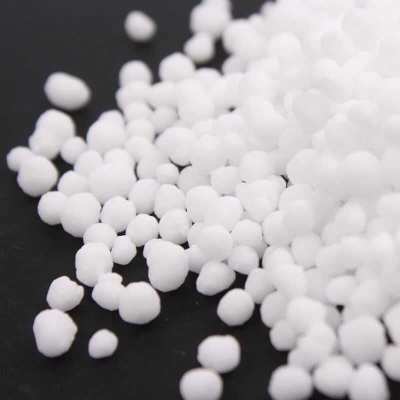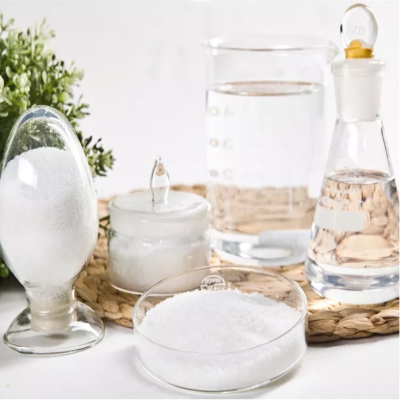-
Categories
-
Pharmaceutical Intermediates
-
Active Pharmaceutical Ingredients
-
Food Additives
- Industrial Coatings
- Agrochemicals
- Dyes and Pigments
- Surfactant
- Flavors and Fragrances
- Chemical Reagents
- Catalyst and Auxiliary
- Natural Products
- Inorganic Chemistry
-
Organic Chemistry
-
Biochemical Engineering
- Analytical Chemistry
- Cosmetic Ingredient
-
Pharmaceutical Intermediates
Promotion
ECHEMI Mall
Wholesale
Weekly Price
Exhibition
News
-
Trade Service
Carbyne (carbene, also translated as "Carbon", "linear carbon"), is formed by connecting single-chain carbon atoms, and is the hardest material known theoretically
.
?? Recently, scientists have predicted through theoretical calculations that in addition to being hard, this novel material also has special conductive properties.
It can be pulled from a conductor to a semiconductor or even an insulator! ?? Carbyne is arranged by linear carbon atoms, each carbon can provide 4 valence electrons to form a covalent bond with surrounding atoms, if you want to form a straight chain, theoretically a bond between two carbon atoms The number can be 2:2 (double bonds between carbon atoms) or 1:3 (arranged in a single bond-parametric bond-single bond-parametric bond?? staggered), when the carbyne is in a relaxed state (relaxed State, here means a state that is not restricted by any other external force or field influence), each group of carbon-carbon bonds is almost the same length and possesses the properties of a conductor
.
Seeing this, you might intuitively think that carbon to carbon should all be connected by double bonds.
Wait a minute, don't jump to conclusions so quickly! According to the Peieris instability theory (Peieris instability), a one-dimensional infinite molecular string tends to become a long and one short bond to reduce the total energy, so why is it said that carbyne is of equal length? ? The reason is that the molecule is not in a stationary and stable state, and the relative position of the atoms will vibrate (the probability of occurrence at different bond lengths can be determined by the energy surface of the molecule), which makes the change of bond length "fuzzy"
.
When the carbon-carbon bond structure changes between the two low-potential energy forms of 1:3 and 3:1 (the probability of occurrence is the same), if the potential energy barrier between the two is not large, the vibration wave of the carbon-carbon bond (nuclear vibration wave) Function), you can step on two boats, which are distributed in the middle of 1:3 and 3:1, instead of focusing on the two lowest energy points, leading us to observe results of equal length
.
? The Boris-Yakobson team of Rice University (Rice University) used theoretical simulations to study carbyne[1].
They elongated the carbyne and calculated its electrical conductivity.
.
The results show that when the carbyne is elongated, the carbon-carbon bonds tend to become unequal lengths (because the potential energy barrier between the 1:3 and 3:1 bonding structures becomes higher, making the carbon-carbon atom vibration impossible If you cross the energy barrier, you can’t step on two boats, but can only be distributed in one of them (see the above picture on the right).
The energy gap (band gap) between the valence electrons and the conductive band will also be enlarged, making the carbyne change.
In addition, when considering its conductivity, how the two ends of the carbyne are connected to the electrode will also affect the result
.
Artyukhov, one of the researchers, said: "Before this study, most people believed that carbyne should be stable in a long and short bonding structure to maintain the state of an insulator.
Our theory considers the atomic vibration band.
The uncertainty that comes has made the zero-point vibration a variable cause of competition with Pyers instability, which offsets the unequal distance between the bond lengths caused by Pyers instability
.
” By adjusting the tension applied to the carbyne, we can control the competition of these two factors, adjust its conductivity, and make it transfer from the conductive phase to the semiconductor phase
.
? At present, there are still many technical problems in the synthesis of carbyne, so that most of the research on carbyne remains in the theoretical stage, and the application level cannot be effectively developed
.
One day in the future, if carbyne can be successfully mass-produced, its hard properties and special conductivity changes will have great potential to be applied to electronics and other industries!
.
?? Recently, scientists have predicted through theoretical calculations that in addition to being hard, this novel material also has special conductive properties.
It can be pulled from a conductor to a semiconductor or even an insulator! ?? Carbyne is arranged by linear carbon atoms, each carbon can provide 4 valence electrons to form a covalent bond with surrounding atoms, if you want to form a straight chain, theoretically a bond between two carbon atoms The number can be 2:2 (double bonds between carbon atoms) or 1:3 (arranged in a single bond-parametric bond-single bond-parametric bond?? staggered), when the carbyne is in a relaxed state (relaxed State, here means a state that is not restricted by any other external force or field influence), each group of carbon-carbon bonds is almost the same length and possesses the properties of a conductor
.
Seeing this, you might intuitively think that carbon to carbon should all be connected by double bonds.
Wait a minute, don't jump to conclusions so quickly! According to the Peieris instability theory (Peieris instability), a one-dimensional infinite molecular string tends to become a long and one short bond to reduce the total energy, so why is it said that carbyne is of equal length? ? The reason is that the molecule is not in a stationary and stable state, and the relative position of the atoms will vibrate (the probability of occurrence at different bond lengths can be determined by the energy surface of the molecule), which makes the change of bond length "fuzzy"
.
When the carbon-carbon bond structure changes between the two low-potential energy forms of 1:3 and 3:1 (the probability of occurrence is the same), if the potential energy barrier between the two is not large, the vibration wave of the carbon-carbon bond (nuclear vibration wave) Function), you can step on two boats, which are distributed in the middle of 1:3 and 3:1, instead of focusing on the two lowest energy points, leading us to observe results of equal length
.
? The Boris-Yakobson team of Rice University (Rice University) used theoretical simulations to study carbyne[1].
They elongated the carbyne and calculated its electrical conductivity.
.
The results show that when the carbyne is elongated, the carbon-carbon bonds tend to become unequal lengths (because the potential energy barrier between the 1:3 and 3:1 bonding structures becomes higher, making the carbon-carbon atom vibration impossible If you cross the energy barrier, you can’t step on two boats, but can only be distributed in one of them (see the above picture on the right).
The energy gap (band gap) between the valence electrons and the conductive band will also be enlarged, making the carbyne change.
In addition, when considering its conductivity, how the two ends of the carbyne are connected to the electrode will also affect the result
.
Artyukhov, one of the researchers, said: "Before this study, most people believed that carbyne should be stable in a long and short bonding structure to maintain the state of an insulator.
Our theory considers the atomic vibration band.
The uncertainty that comes has made the zero-point vibration a variable cause of competition with Pyers instability, which offsets the unequal distance between the bond lengths caused by Pyers instability
.
” By adjusting the tension applied to the carbyne, we can control the competition of these two factors, adjust its conductivity, and make it transfer from the conductive phase to the semiconductor phase
.
? At present, there are still many technical problems in the synthesis of carbyne, so that most of the research on carbyne remains in the theoretical stage, and the application level cannot be effectively developed
.
One day in the future, if carbyne can be successfully mass-produced, its hard properties and special conductivity changes will have great potential to be applied to electronics and other industries!







